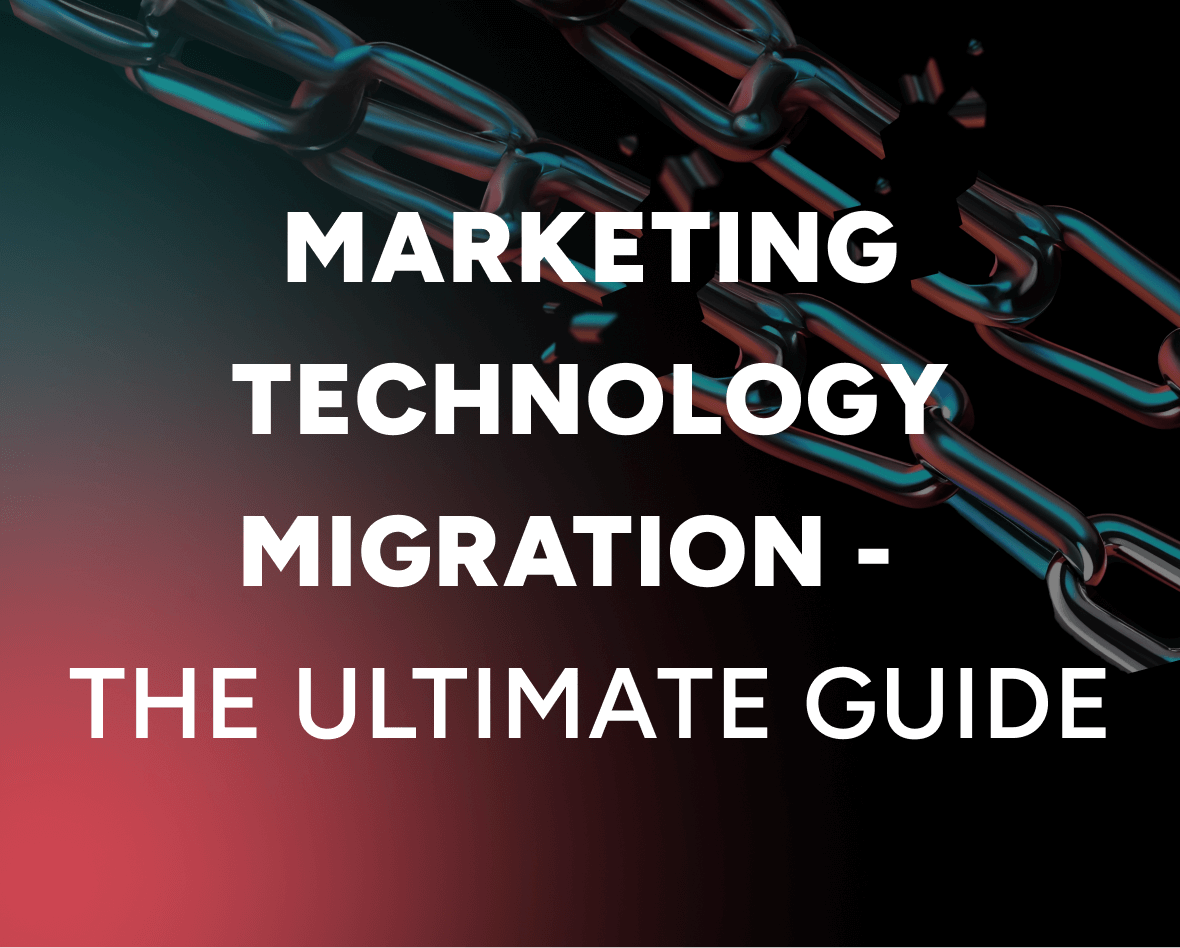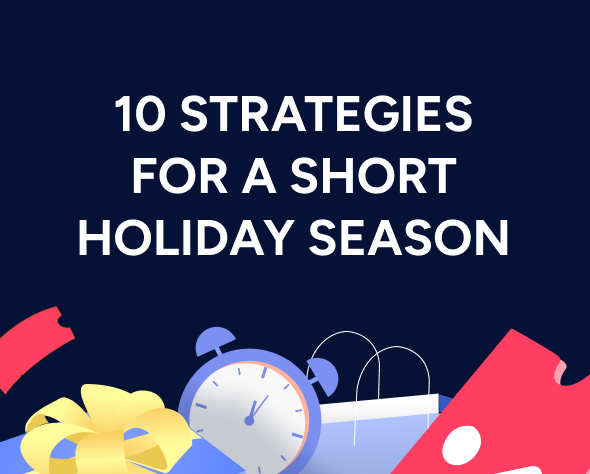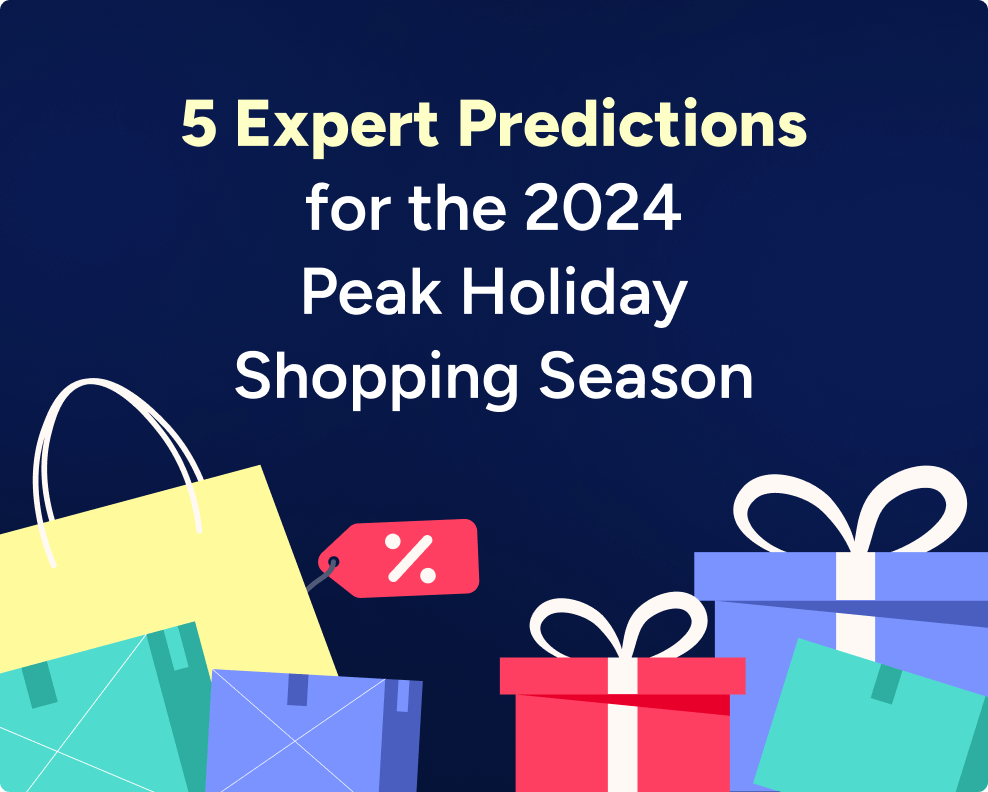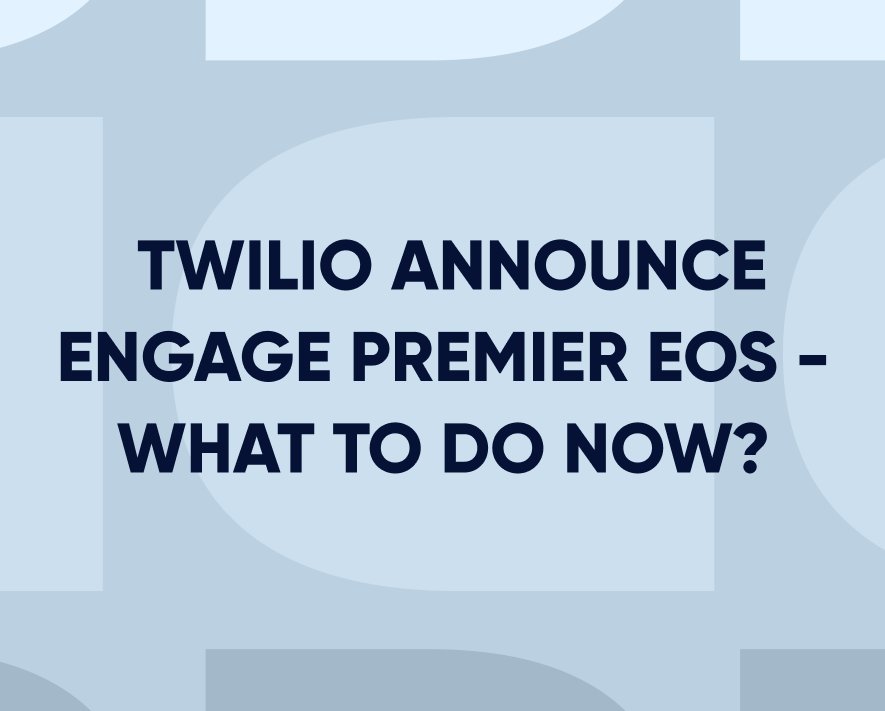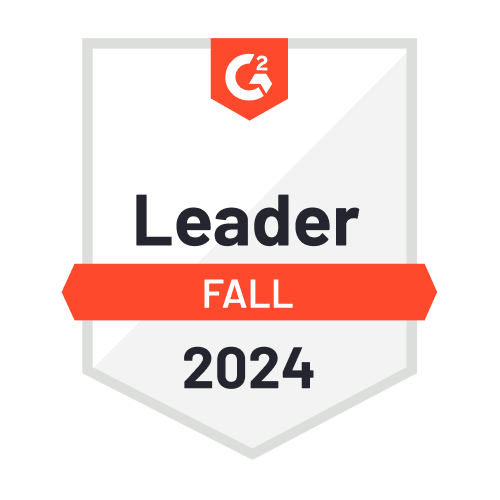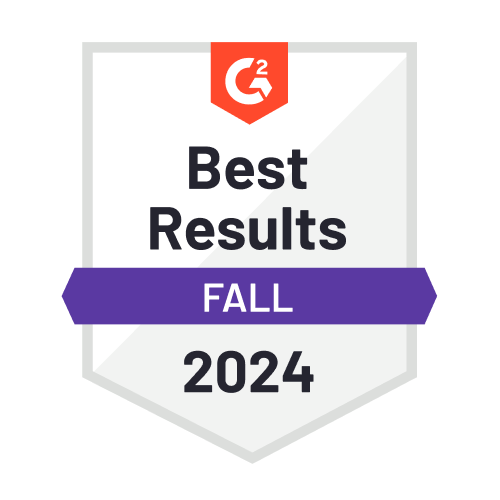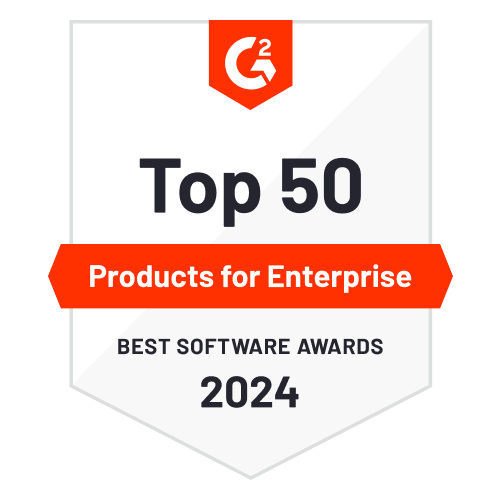The AI way: Redefining how mobile app marketers target, engage, convert and retain mobile app users
The days of generic marketing campaigns that targeted customers across the board as a homogeneous group is passe. Today, marketing is all about being contextual – reaching the right consumer, at the right time, with the right information. The most difficult step in this marketing journey, usually, is identifying the right-fit target audience for a product.
Updated on Mar 11, 2019
Mobile app marketers often find that despite the best marketing efforts, conversion rates remain low. Or, the number of app installs may be high, but it doesn’t translate into a high number of loyal users. A major reason for this disequilibrium is that a marketer may not be engaging with the right consumer segment.
Traditionally, consumers were segmented on the basis of generalized categories. But today, predictive consumer segmentation powered by Artificial Intelligence (AI) and machine learning is one of the most exciting tools available to marketers. It gives organizations the power to micro-segment and target a user group with the highest conversion potential.
What if a marketer could predict the app user who is most likely to convert, those who will uninstall, or who will double their shopping spend? AI-powered user segmentation allows them to group consumers into such niche categories. Armed with this information, they can create a focused engagement strategy, maximize ROI and cut down on wasted marketing efforts.
A marketing journey can be divided into two broad categories: segmenting the target audience and engaging with the right users. Marketers often focus their efforts on user engagement, and let segmentation take a back seat. This results in a mistargeted marketing plan, where they engage with users without understanding their lifecycle status and preferences. Net outcome: low conversion rates and increasing uninstall rates.
Studies show that most mobile apps lose 80% of new users in the first 90 days. Of these, almost 50% of the total users who uninstall the app will do so in the first 4 to 5 days, the standard onboarding period for new users.
Your mobile app conversion rates are only as powerful as your segmentation. Marketing segmentation is critical for marketers as it allows them to understand customer behavior, where they are in their customer life cycle, predict their needs and then deliver tailor-made experiences that drive growth.
The days of generic marketing campaigns that targeted customers across the board as a homogeneous group is passe. Today, marketing is all about being contextual – reaching the right consumer, at the right time, with the right information. The most difficult step in this marketing journey, usually, is identifying the right-fit target audience for a product.
Mobile app marketers often find that despite the best marketing efforts, conversion rates remain low. Or, the number of app installs may be high, but it doesn’t translate into a high number of loyal users. A major reason for this disequilibrium is that a marketer may not be engaging with the right consumer segment.
Traditionally, consumers were segmented on the basis of generalized categories. But today, predictive consumer segmentation powered by Artificial Intelligence (AI) and machine learning is one of the most exciting tools available to marketers. It gives organizations the power to micro-segment and target a user group with the highest conversion potential.
What if a marketer could predict the app user who is most likely to convert, those who will uninstall, or who will double their shopping spend? AI-powered user segmentation allows them to group consumers into such niche categories. Armed with this information, they can create a focused engagement strategy, maximize ROI and cut down on wasted marketing efforts.
A marketing journey can be divided into two broad categories: segmenting the target audience and engaging with the right users. Marketers often focus their efforts on user engagement, and let segmentation take a back seat. This results in a mistargeted marketing plan, where they engage with users without understanding their lifecycle status and preferences. Net outcome: low conversion rates and increasing uninstall rates.
Studies show that most mobile apps lose 80% of new users in the first 90 days. Of these, almost 50% of the total users who uninstall the app will do so in the first 4 to 5 days, the standard onboarding period for new users.
Your mobile app conversion rates are only as powerful as your segmentation. Marketing segmentation is critical for marketers as it allows them to understand customer behavior, where they are in their customer life cycle, predict their needs and then deliver tailor-made experiences that drive growth.
Traditional Vs New
Traditional Customer Segmentation segregates customers on demographic, psychographic, behavioral, and geographic similarities. It also divides customers into sweeping groups, with surface-level similarities between them. For example: Men in 20-35 age category, Fitness Freaks or Business Class Flyers. These segments are usually based on the past information available on the consumer.
New Predictive Marketing Segmentation segregates users on the basis of their likelihood to perform an action in the future. For example: Is a user likely to be a repeat buyer? Is he likely to churn? Is he likely to switch to a rival brand? Is he likely to increase his shopping budget?
For marketers, this is a more powerful and effective form of segmentation than merely clustering all Men in the 20-35 age category. Using this information, they can design tailor-made targeting strategies to push the right product to the right user, not waste their marketing dollars and improve their Return on Ad Spend (ROAS).
How Marketers Can Benefit From Predictive Segmentation
Today’s digitally-powered customers look for the best user experiences. Therefore, smart marketers need to leverage on effective customer segmentation strategies to give them an edge over competitors, by delivering tailor-made products, optimizing offers and differentiating their experience. Predictive segmentation comes with a bevy of benefits:
Identify micro-segments of users who you can actually influence: This way, you don’t spam your entire user database.
Create relevant customer journeys: Send the right messages, creative campaigns, offers and pricing options to the right users.
Save time and money: That you would spend on promotions and offering discounts to customers who would have purchased anyway.
Accurately predict your marketing ROI: Transform your marketing team from a cost center to a revenue center.
Speed to insight: Convert data into insights, and insights into action. With dynamic, real-time segmentation, serve the right message at the right time.
Identify users who are likely to churn and re-engage with them: It costs less to keep existing customers than to acquire new ones.
Cross-sell your products: Use predictive segmentation to understand what new products you can recommend to an existing customer.
Insider’s New Predictive Segments and How Marketers Can Use Them
Insider’s AI and machine learning powered predictive segmentation engine for mobile apps combines segmentation with real-time customer intelligence to hyper-personalize experiences for every app user. Let’s look at some strategies that marketers can apply, using this predictive marketing segmentation tool.
1.Identify users in the Likelihood to Uninstall (LTU) segment and re-engage with them
The global financial markets are always swaying between being bullish and bearish. In an extended bear-phase, a finance company used Insider’s predictive segmentation engine to estimate that 100K of its app users fell in the Likelihood to Uninstall (LTU) segment. This was a huge number and the company wanted to ensure they don’t churn.
To target its LTU user segment, the company used Insider’s AI-powered LTU tool, to account for all possible actions that a user might take at every stage of his app journey. The tool then adapted the company’s engagement strategy, by building personalized omnichannel campaigns across multiple touchpoints.
The finance company realized that extraordinary action would be required to keep the users onboard. To begin with, it sent the users an In-App Notification, offering a 20% discount coupon on every purchase. This strategy met with instant success, as a high number of users availed the offer. As a next step, they received a `Thank-You’ email, which offered a second discount coupon for their next purchase.
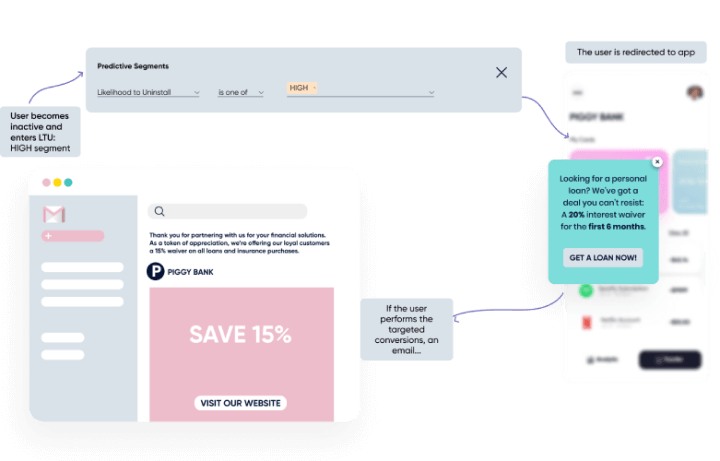
Net result:
- The marketer reduced app uninstall rates by hyper-targeting only those customers who were at a high risk of churning.
- He was able to optimize his retention marketing spend by ensuring that he spent his dollars only on these high-risk users.
- As a bonus, he was able to convert these likely-to-churn users into loyal users by offering them further deals and discounts.
2. Cash-in on the Likelihood to Purchase (LTP) user segment by offering high-end products; boost profits
Post-Covid, as the global travel market began gaining momentum, a travel company was looking at increasing profit margins from its app. To do so, the company targeted its most valuable customers, the Likelihood to Purchase (LTP) or Customer Lifetime Value (CLV) segment. This segment comprises users who are expected to make a big-ticket purchase in the near future.
The LTP algorithm analyzes user behavior to predict whether they are likely to make a purchase in the next week. Targeting this user segment requires a unique communication strategy. They don’t need to be inundated with discounts and sales offers. Instead, exclusive deals, offered through the right platform (be it Google AdWords, Facebook Ads, or other tailored journeys), work best with them.
In keeping with this, the travel app sent a Carousel Push Notification to its LTP users, showcasing three exclusive travel destinations designed specifically for him. When the user opened the notification, he landed on a personalized, red-carpet version of the travel app, designed using Insider’s Content Optimizer. The app listed all the information and tips he’d need to plan his holiday.
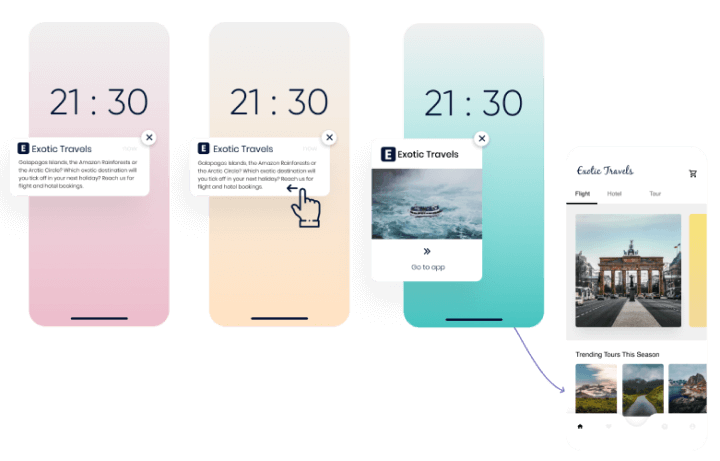
The engagement didn’t end here. If the customer purchased an air ticket, he would receive time-based push notifications leading to engage with him using different content. For example, this could be an email, reminding him to check when his passport was due for renewal and if he had packed his holiday essentials, along with a `Thank You’ note. This VIP treatment impacts a user’s brand perception and increases conversions for the company.
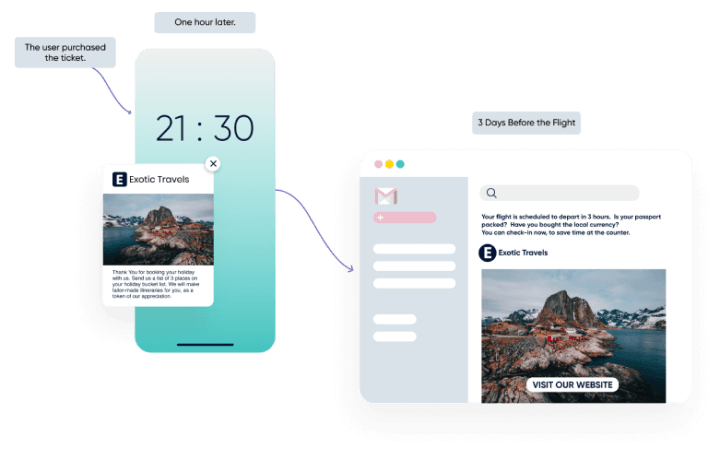
Net result:
- The company was able to increase its profit margins by matching the right user segment with its exclusive products. Also, there was no compulsion to offer discounted products to this segment.
- They save on Customer Acquisition Costs by retaining loyal users.
- The marketer optimizes his retention marketing spend by ensuring that he spends his money only on customers who are most likely to purchase.
- Marketers have the potential to convert these users into loyal customers by offering them a red-carpet journey and sending them further deals.
Conclusion
Predictive segmentation is emerging as a path-breaking tool for marketers to formulate cohesive target marketing strategies and convert mobile app users. It helps them break down their user database into highly specific consumer categories, based on their unique characteristics and behavior patterns. Marketers can then create effective and personalized strategies to engage and retain them.

